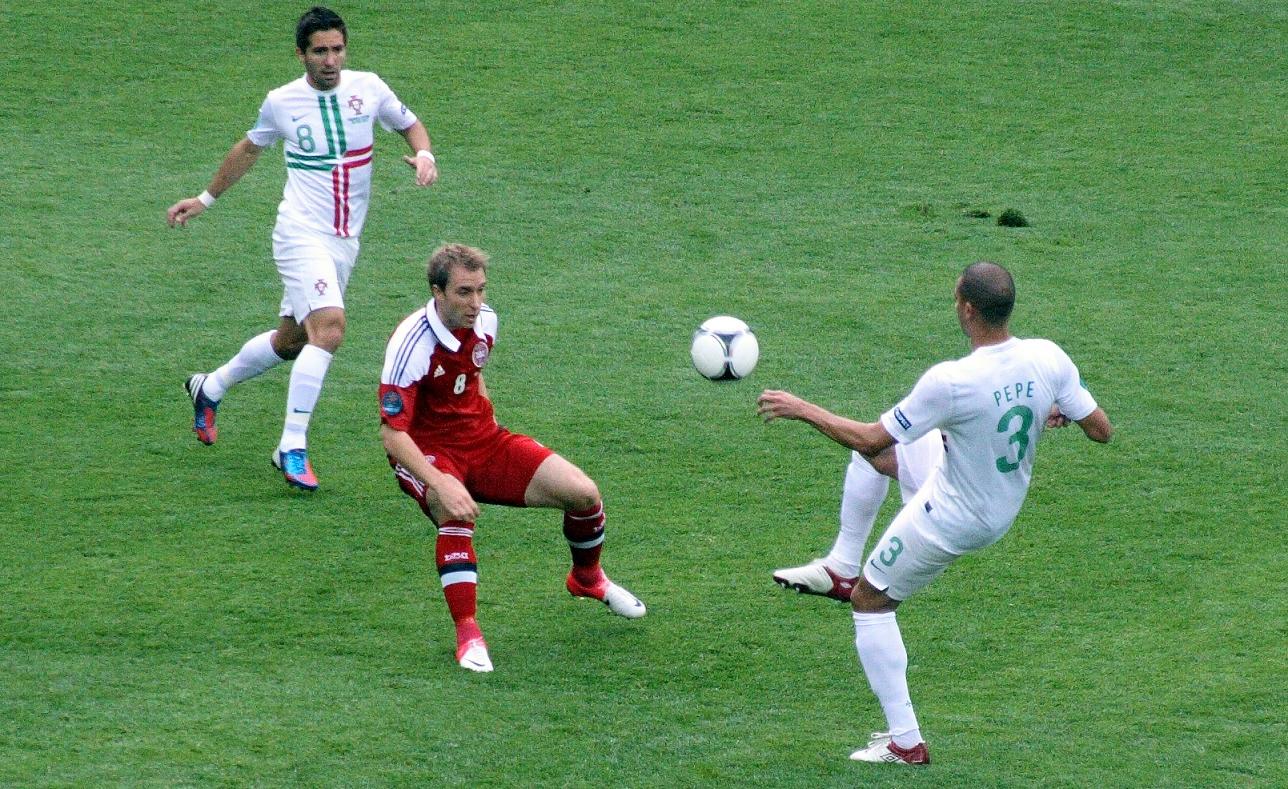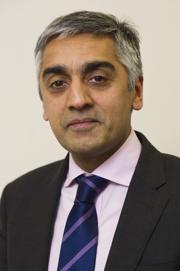Professor Sanjay Sharma explains Christian Eriksen’s collapse at Euro 2020
Published: 06 July 2021
 Photo by User:Водник on Wikimedia Commons - https://commons.wikimedia.org/wiki/File:Wp_eriksen_moutinho_pepe.jpg
Photo by User:Водник on Wikimedia Commons - https://commons.wikimedia.org/wiki/File:Wp_eriksen_moutinho_pepe.jpg
On Saturday 12th June 2021, the world seemingly stood still as professional footballer Christian Eriksen collapsed on the pitch while playing for Denmark in a Euro 2020 group fixture against Finland. Thankfully, Eriksen was given rapid emergency care at the stadium, saving his life, with the news emerging of his recovery within a couple of hours of the collapse.
As more information came through, it became clear that Eriksen had suffered a cardiac arrest on the pitch, with an automated external defibrillator (AED) used to reset his heart rhythm following CPR performed by those on scene.
Once the news broke, Professor of Inherited Cardiac Diseases and Sports Cardiology at St George’s, Sanjay Sharma, was on hand to explain what had happened to Eriksen during the game, being interviewed by journalists across television, print and radio.
“I don’t know whether he’ll ever play football again”

“I don’t know whether he’ll ever play football again,” said Professor Sharma, who is also a Cardiology Advisor for the English Institute of Sport and former doctor for Eriksen’s previous football club, Tottenham Hotspur FC. Speaking to the PA news agency, he added, the reports that he was awake in hospital were a “very good sign”, but that his future remained in doubt.
Professor Sharma, was uniquely positioned to discuss the ongoing situation, based on his leading role in sports cardiology with a focus on heart rhythm patterns in athletes. His achievements include developing the first ever international recommendations for the interpretation of these patterns in athletes. These recommendations have been adopted worldwide, with an impact on more than 210,000 athletes in the USA and at least 120,000 athletes and young people active in amateur sport in the UK, and are being used to diagnose and prevent sudden cardiac arrests every day.
“I think there has to be a shared decision process”
Later in the week, it emerged that Eriksen elected to have an implantable cardioverter defibrillator (ICD) fitted.
Speaking to BBC Radio 4, Professor Sharma explained that an ICD is “a small device that's inserted just below the level of the collarbone and is attached to a lead which goes to the heart and monitors the heart, day and night and looks for potentially fatal rhythms. If it detects them it delivers a shock to actually restore normal rhythm.”
The device is fitted under local anaesthetic in a procedure that takes around “45 minutes to an hour,” according to Professor Sharma.
Following the fitting of the implant, it will now be down to Eriksen, his family and recommendations from doctors and footballing authorities as to whether he will be able to play again.
Explaining that the disease is usually irreversible, Professor Sharma highlighted evidence that people may still be able to compete with a defibrillator fitted. “There was a large study of over 400 individuals who were competitive athletes and had ICDs put into them,” he said. “These people continued to exercise, some against medical advice, and they were followed up for 44 months and in that time, there were no adverse cardiac events, so there is a possibility that he will be able to play.”
While also noting that the Italian Football Federation (the ruling body where Eriksen plays) have strict regulations on returning to play, he added, “I think there has to be a shared decision process, where he will have to be involved, alongside inclusion of his next of kin and doctors coming together to try and make a decision to ensure that he is as safe as possible.”
“It may even transpire that the actual underlying cause for his cardiac arrest is never identified”
The understanding of the causes of sudden cardiac arrests is growing all the time, with significant progress being made every day by a team at St George’s, led by Professors Elijah Behr and Mary Sheppard, alongside Professor Sharma.
In the case of Christian Eriksen, it is not yet clear what led to his collapse.
“He was tested several times over the past 9 or 10 years and nothing obvious was detected,” said Professor Sharma.
“He may have a subtle scar or subtle information within the heart muscle that is not picked up by the usual kind of machines,” he continued, “or it may even transpire that the actual underlying cause for his cardiac arrest is never identified.”
It is hoped that, with further research, more and more cases of sudden cardiac arrest will be both diagnosable and preventable. For Christian Eriksen, the fast actions of those on scene and the technology available were able to save his life, leading to calls for defibrillators to be made more easily accessible in grassroots sports.
If you would like to support our research into investigating sudden deaths, you can read more about the impact of our work and how to donate here.